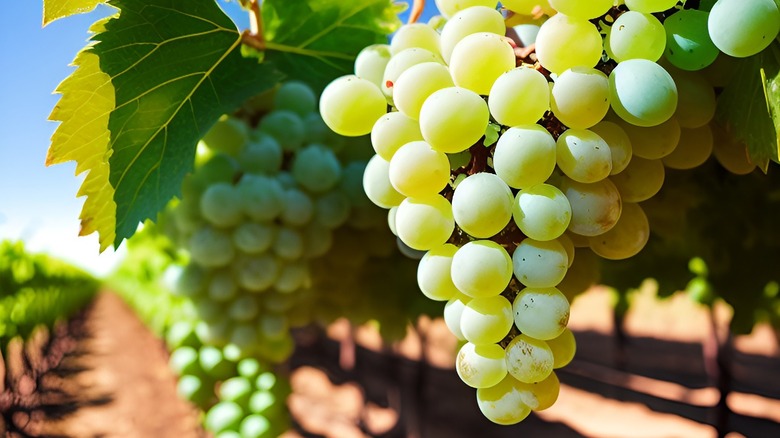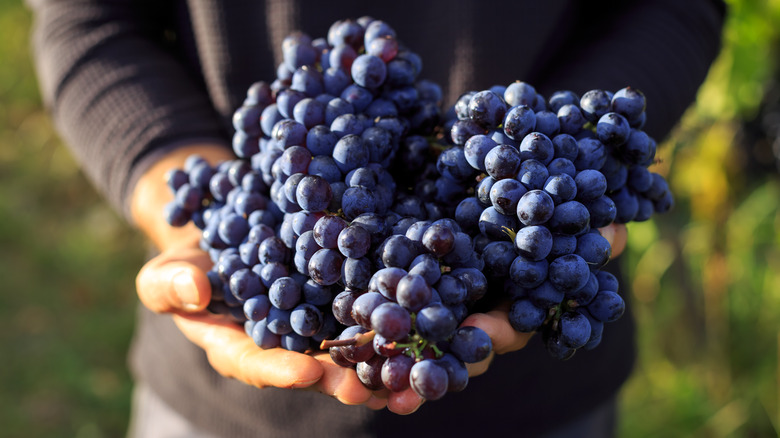The Grapes Used To Make Wine Aren't Your Normal Store-Bought Variety
Have you ever looked at the price tag of an expensive bottle of wine and thought: What's all the fuss? Grapes are common at the supermarket, so how can some of these bottles be so expensive when they're just made from grapes? It might come as a surprise, but the supermarket-standard varieties you're familiar with like Concord, crimson seedless, and Cotton Candy grapes aren't being used by the greatest vineyards in the world to make their wines.
On a technical level, wine grapes and table grapes for eating are not entirely of the same lineage. While both originate from the Vitis genus, their species are different. The most popular wine grapes are descended from the species Vitis vinifera, whereas most table grapes generally contain DNA from Vitis labrusca or Vitis rotundifolia, though there are some exceptions.
On a practical level, this important difference in lineage has a direct effect on their respective Brix levels — or measurement of the grapes' sugar content. Wine fermentation requires a lot of sugar for yeast to convert into alcohol, which is why wine grapes are optimal thanks to their high Brix levels of 24 to 26. Conversely, table grapes only have Brix levels of 17 to 19. These grapes contain a higher water content in their pulp, making them great to snack on, but poor for fermenting into wine due to how little residual sugar would be left to balance the final product.
Other differences between wine grapes and store-bought
On the flip side, there are certain qualities of wine grapes that make them less than ideal for eating compared to table grapes. Some of the most popular wine grapes like cabernet sauvignon, chardonnay, and merlot are actually edible, sweet, and delicious. What holds them back from being used as supermarket grapes for eating is their skins and their size. Wine grapes generally are very thick-skinned. This isn't a quality that's pleasant to eat, but the thick skins are useful in adding color to red wines and rosés. Because the skins are so big, the pulps are relatively small compared to table grapes and they usually contain big seeds in the middle.
Wine grapes are smaller, too, so there isn't much substance to them when you take away the skin and seed. What they lack in size, however, they make up for in flavor concentration. This is reflected in their crop yield. Vineyards intentionally aim for lower yields of wine grapes, because less fruit on the vines means more flavor for the ones that do grow. More flavor in the clusters of grapes means more flavor in the eventual bottle of wine. They are also harvested later to further help increase Brix levels. Table grapes, on the other hand, are grown for volume and not flavor concentration. This is why you see them available in supermarkets all year round in varying degrees of taste and quality. Not exactly ideal for winemaking.

